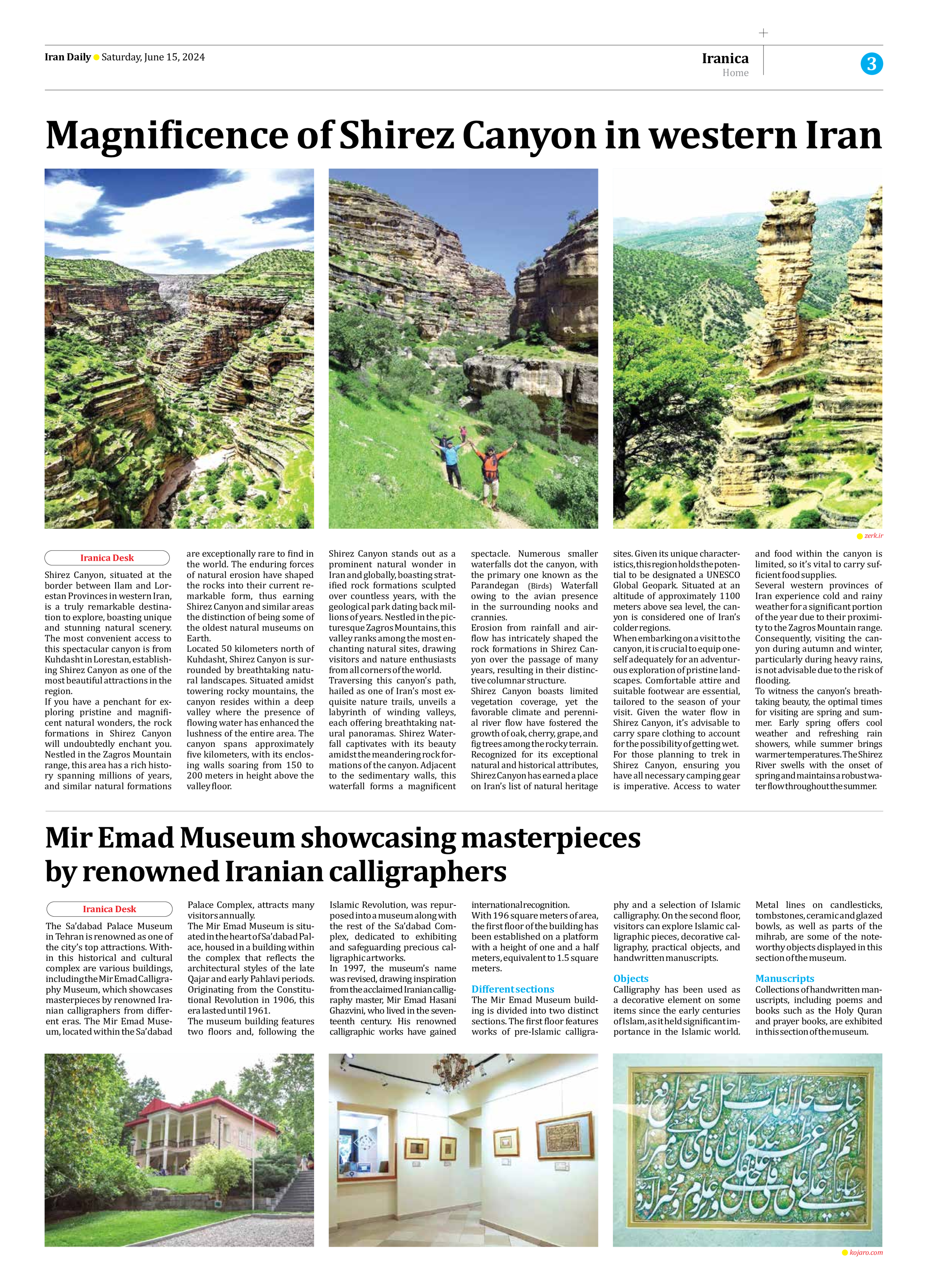
Mir Emad Museum showcasing masterpieces by renowned Iranian calligraphers
The Sa’dabad Palace Museum in Tehran is renowned as one of the city’s top attractions. Within this historical and cultural complex are various buildings, including the Mir Emad Calligraphy Museum, which showcases masterpieces by renowned Iranian calligraphers from different eras. The Mir Emad Museum, located within the Sa’dabad Palace Complex, attracts many visitors annually.
The Mir Emad Museum is situated in the heart of Sa’dabad Palace, housed in a building within the complex that reflects the architectural styles of the late Qajar and early Pahlavi periods. Originating from the Constitutional Revolution in 1906, this era lasted until 1961.
The museum building features two floors and, following the Islamic Revolution, was repurposed into a museum along with the rest of the Sa’dabad Complex, dedicated to exhibiting and safeguarding precious calligraphic artworks.
In 1997, the museum’s name was revised, drawing inspiration from the acclaimed Iranian calligraphy master, Mir Emad Hasani Ghazvini, who lived in the seventeenth century. His renowned calligraphic works have gained international recognition.
With 196 square meters of area, the first floor of the building has been established on a platform with a height of one and a half meters, equivalent to 1.5 square meters.
Different sections
The Mir Emad Museum building is divided into two distinct sections. The first floor features works of pre-Islamic calligraphy and a selection of Islamic calligraphy. On the second floor, visitors can explore Islamic calligraphic pieces, decorative calligraphy, practical objects, and handwritten manuscripts.
Objects
Calligraphy has been used as a decorative element on some items since the early centuries of Islam, as it held significant importance in the Islamic world. Metal lines on candlesticks, tombstones, ceramic and glazed bowls, as well as parts of the mihrab, are some of the noteworthy objects displayed in this section of the museum.
Manuscripts
Collections of handwritten manuscripts, including poems and books such as the Holy Quran and prayer books, are exhibited in this section of the museum.







